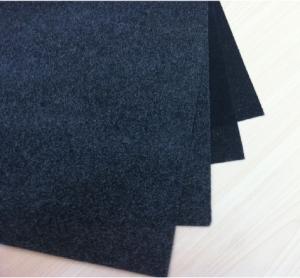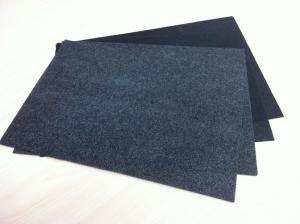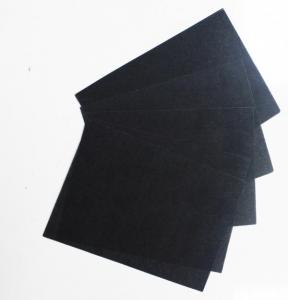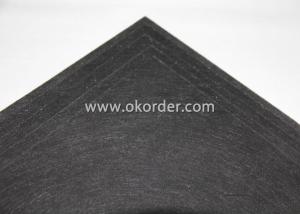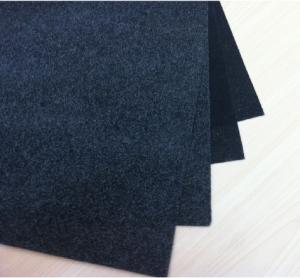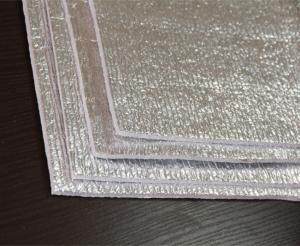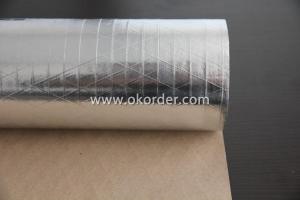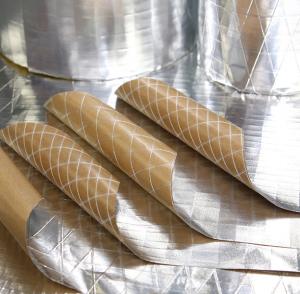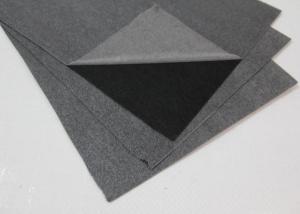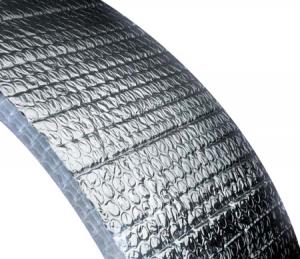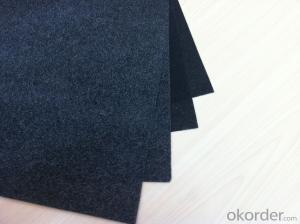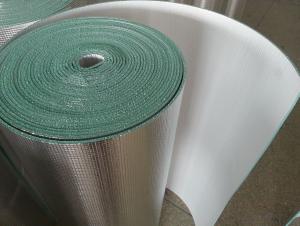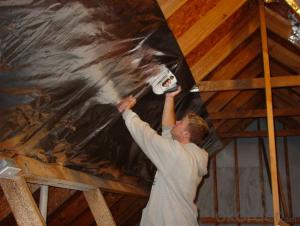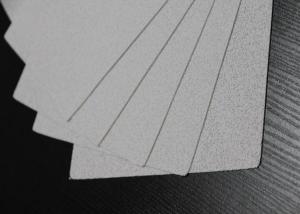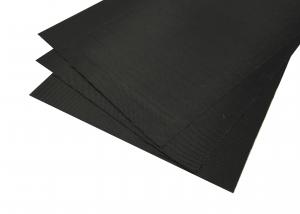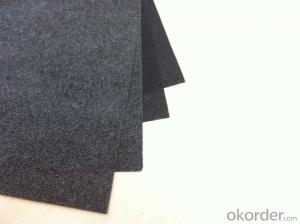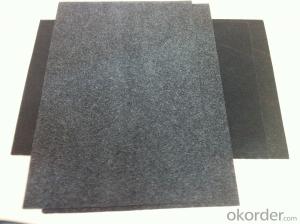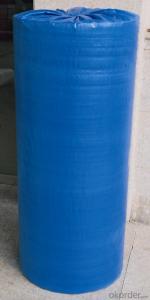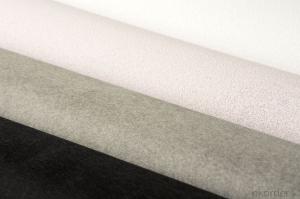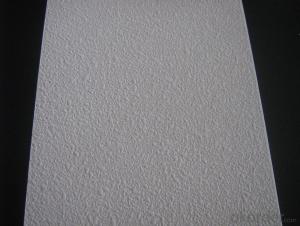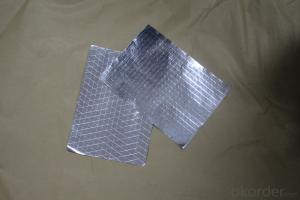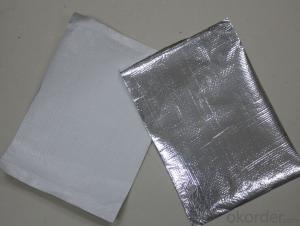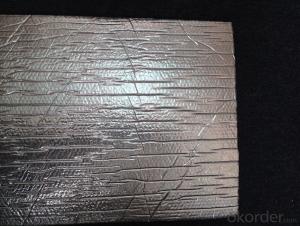Black Fiberglass Tissue-BFT001-65E
- Loading Port:
- China Main Port
- Payment Terms:
- TT or L/C
- Min Order Qty:
- 10000M2 m²
- Supply Capability:
- 50000M2 Per Week m²/month
OKorder Service Pledge
OKorder Financial Service
You Might Also Like
Specifications of Black Fiberglass Tissue
|
Specification | ||
|
ITEM |
UNIT |
VALUE |
|
Type |
|
E |
|
Weight |
g/m2 |
65±5 |
|
Thickness |
mm |
0.40 |
|
Tensile Strength MD |
n/5cm |
≥130 |
|
Tensile Strength XD |
n/5cm |
≥90 |
|
Fiber Diameter |
µ |
9 |
|
Fire Resistant Property |
|
B1 |
SIZE:
Width: 0.6m---1.3m
Length: 100m-1000m
Core I.D.: 3"(76mm ±1)
Based on order, special sizes are also available.
MSDS:No harm for body and environment, non-volatile product.
Remarks:
1. The data above are typical results and subject to change without notice.
2. Tolerance: Weight and Thickness: ±10%; Width: ±3mm; Length: ±0.5%.
3. The products should be stored at room temperature, kept from wet and kept away heat source.
4. Good appearance without stain, oxidation, mildew.
5. The users should take test and do trial-application on the above products before coming into application so as to witness and ensure suitability for their special purpose and technique.
Usage/Applications of Black Fiberglass Tissue
Fiberglass facing is good at fireproof, mildew resistant, damp proof and strong air permeability. After laminated with glass wool or rock wool, the physical properties is excellent such as heat preservation, noise elimination, fire retardant, extinction, etc.
Packaging & Delivery of Black Fiberglass Tissue
Each roll is packed by the water-proof film
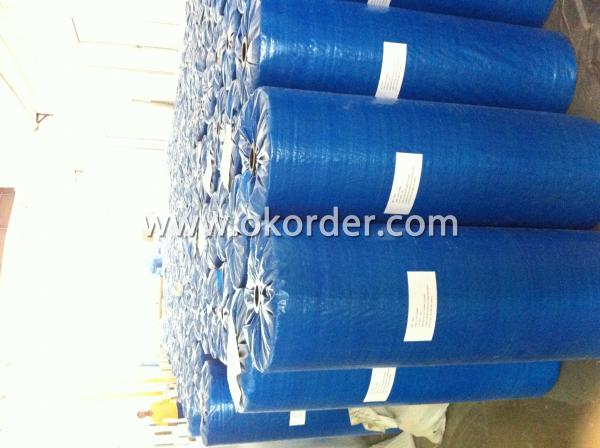

- Q:Is fiberglass facing fire-resistant?
- Indeed, fiberglass possesses fire-resistant qualities. Its composition comprises a blend of glass fibers and resin, resulting in exceptional resistance to heat. Fiberglass exhibits the ability to endure elevated temperatures without undergoing melting or emitting harmful fumes. It finds frequent application in scenarios where fire resistance holds paramount importance, including insulation, protective garments, and building materials. Nonetheless, it is crucial to acknowledge that the fire-resistance attributes of fiberglass may be influenced by the substances it is coupled with, such as adhesives or coatings.
- Q:What is the typical thickness of fiberglass facing?
- The typical thickness of fiberglass facing can vary depending on the specific application and requirements. In general, fiberglass facing is available in thicknesses ranging from 0.5 millimeters to 2 millimeters. Thinner fiberglass facing, around 0.5 to 1 millimeter, is commonly used for lightweight and flexible applications such as insulation and acoustic panels. Thicker fiberglass facing, around 1.5 to 2 millimeters, is often used for more heavy-duty applications where higher strength and durability are required, such as in construction and industrial settings. It is important to consider the specific needs and specifications of a project to determine the appropriate thickness of fiberglass facing to ensure optimal performance and functionality.
- Q:Are there any health concerns associated with fiberglass facing?
- Fiberglass facing presents health concerns that one should be aware of. The composition of fiberglass consists of minuscule fibers that can become airborne if disturbed, such as during installation or removal. Inhaling these fibers can cause irritation to the respiratory system and result in symptoms like coughing, tightness in the chest, and difficulty breathing. Furthermore, prolonged exposure to fiberglass fibers can lead to fibrosis, a severe lung condition characterized by scarring and stiffness in the lung tissues. Moreover, direct contact with fiberglass can cause skin irritation and trigger allergic reactions. The tiny fibers are capable of penetrating the skin, leading to itchiness, redness, and the development of a rash. To minimize the associated health risks, it is crucial to take precautions when working with fiberglass. This involves wearing appropriate protective clothing, gloves, goggles, and a respirator to prevent the inhalation of fibers. Additionally, it is essential to properly clean up any fiberglass dust or debris to avoid further exposure. If there is a suspicion of fiberglass exposure and persistent respiratory or skin symptoms are experienced, it is strongly recommended to seek medical attention for a thorough evaluation and appropriate treatment.
- Q:How is fiberglass facing installed?
- Fiberglass facing is typically installed by positioning it against the desired surface and securing it with adhesive or mechanical fasteners such as staples or screws. The facing is then smoothed out to remove any wrinkles or air bubbles, ensuring a tight and even installation.
- Q:Does fiberglass facing help with soundproofing?
- Yes, fiberglass facing can help with soundproofing. Fiberglass is known for its excellent sound-absorbing capabilities, as it can effectively trap and dampen sound waves. When used as a facing material, fiberglass can enhance the soundproofing properties of a wall or ceiling by reducing noise transmission through it. The facing acts as a barrier that prevents sound from passing through, making it an effective solution for reducing noise pollution in various settings, such as homes, offices, studios, or even industrial environments. Additionally, fiberglass is lightweight, easy to install, and can be easily combined with other soundproofing materials for even better results.
- Q:Can fiberglass facing be painted or customized?
- Certainly! Fiberglass facing has the capability to be painted or personalized. Fiberglass, known for its versatility, can be easily painted with a variety of paint types, including acrylic or oil-based options. Prior to painting, it is crucial to adequately prepare the surface by thoroughly cleaning it and eliminating any dirt or debris. Additionally, it is advisable to utilize a primer to enhance adhesion and guarantee a polished outcome. Once the primer has dried, you can proceed to apply the desired paint color or personalize the fiberglass facing through the use of stencils, decals, or other decorative techniques. Nevertheless, if the fiberglass facing is going to be exposed to harsh weather conditions, it is vital to utilize paint and materials suitable for outdoor use. By undertaking the appropriate preparations and utilizing the right paint, fiberglass facing can be painted or personalized to satisfy your specific aesthetic preferences or design requirements.
- Q:Are there different types of fiberglass facing available?
- Yes, there are different types of fiberglass facing available. These can include woven fiberglass fabric, chopped strand mat, and fiberglass mesh, each with its own specific characteristics and uses.
- Q:Is fiberglass facing resistant to moisture or water damage?
- Fiberglass facing, indeed, possesses remarkable resistance against moisture and water damage. This exceptional property arises from the composition of fine glass fibers interwoven to form a robust and enduring material. Absent any capacity to absorb moisture, these fibers bestow upon fiberglass facing a high degree of resilience, rendering it especially suitable for environments prone to water or moisture exposure, like bathrooms, kitchens, and outdoor spaces. Moreover, its resistance to mold and mildew growth further heightens its ability to endure moisture.
- Q:What is the glass fiber needle felt dust filter bag
- Glass fiber needle felt dust filter bag is a high temperature dust bag, is a reasonable structure, better performance of the filter material to glass fiber as raw material
- Q:How does fiberglass facing compare to other types of insulation materials?
- Fiberglass facing is a popular choice for insulation materials due to its numerous advantages over other types of insulation. Firstly, fiberglass facing offers excellent thermal insulation properties, helping to maintain a comfortable temperature inside buildings by minimizing heat transfer. It has a high R-value, which means it provides effective resistance to heat flow. Additionally, fiberglass facing is highly durable and long-lasting. It does not degrade or lose its insulating properties over time, ensuring that it remains effective for many years. This durability also makes it resistant to moisture, mold, and pests, which can be a common issue with other insulation materials such as cellulose or foam. Furthermore, fiberglass facing is easy to install, reducing both time and labor costs. It is available in various forms like batts, rolls, or loose-fill, making it adaptable for different applications and spaces. Its lightweight nature makes it easy to handle and maneuver during installation. One of the key advantages of fiberglass facing is its fire resistance. It is non-combustible, meaning it does not contribute to the spread of fire and can help contain it. This property makes it a safer choice compared to other insulation materials like foam, which can be flammable. Lastly, fiberglass facing is an environmentally friendly option. It is made from natural materials such as sand and recycled glass, reducing its impact on the environment. Additionally, fiberglass insulation can help conserve energy and reduce carbon emissions by improving the energy efficiency of buildings. Overall, fiberglass facing stands out as an excellent choice for insulation materials due to its thermal insulation properties, durability, ease of installation, fire resistance, and eco-friendliness. It outperforms many other types of insulation materials, making it a preferred option for various construction and insulation projects.
1. Manufacturer Overview |
|
|---|---|
| Location | Jangsu, China |
| Year Established | 1999 |
| Annual Output Value | Above US$0.3 billion |
| Main Markets | 0.00% Mid East 15.00% Northern Europe 15.00% North America 10.00% Eastern Asia 20.00% Africa 0.00% Eastern Europe 20.00% Southeast Asia 0.00% Oceania 0.00% Western Europe 0.00% Southern Europe 0South east asia;North America |
| Company Certifications | ISO 9001:2008 |
2. Manufacturer Certificates |
|
|---|---|
| a) Certification Name | |
| Range | |
| Reference | |
| Validity Period | |
3. Manufacturer Capability |
|
|---|---|
| a)Trade Capacity | |
| Nearest Port | Shanghai |
| Export Percentage | 41% - 50% |
| No.of Employees in Trade Department | 20 People |
| Language Spoken: | English; Chinese |
| b)Factory Information | |
| Factory Size: | Above 100,000 square meters |
| No. of Production Lines | Above 4 |
| Contract Manufacturing | OEM Service Offered; Design Service Offered |
| Product Price Range | Average |
Send your message to us
Black Fiberglass Tissue-BFT001-65E
- Loading Port:
- China Main Port
- Payment Terms:
- TT or L/C
- Min Order Qty:
- 10000M2 m²
- Supply Capability:
- 50000M2 Per Week m²/month
OKorder Service Pledge
OKorder Financial Service
Similar products
New products
Hot products
Related keywords
